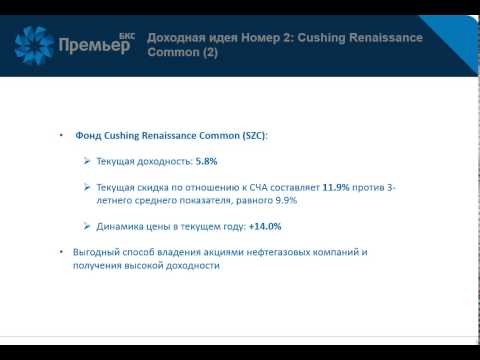Build America Bonds Hit the Market
Post on: 20 Апрель, 2015 No Comment

This past month saw the first major issues of Build America Bonds, the federally subsidized taxable municipal bonds that were authorized under the ARRA stimulus bill. Opinions are mixed about these issues, depending often on one’s occupation and historical perspective on intergovernmental finance. This column will summarize the views of both advocates and critics.
The Build America Bonds (BABs) concept is a revival of the old taxable bond option that was debated for years by economists and public finance professionals during the 1970s and 1980s. The central idea is that instead of exempting municipal bond interest from income taxes, which favors high-income investors at the top marginal rates, it might be more efficient for the U. S. Treasury to simply write a check to the investors or to the municipalities and states that sell these bonds. A direct federal subsidy at a percentage level less than the investors’ average marginal tax rate would cost the federal government less than the indirect subsidy or tax expenditure allowed under tax exempt muni bond interest.
The 2009 ARRA stimulus bill took an aggressive step and allowed for investors to take a tax credit (which nobody seems to want or need these days) or for the issuers to receive a direct federal reimbursement of 35 percent of the interest costs for the life of the issue. It is not readily obvious that the 35 percent formula will benefit Uncle Sam. Note that the top federal income tax rate is 35 percent today, and there are many investors in lower tax brackets who buy municipal bonds — especially muni bond mutual funds. Of course, the Democrats in Washington D.C. may know more than the rest of us regarding future tax rates, and if the marginal tax rate on rich investors is increased to 39.6 percent — as the President has already proposed and the current tax law already provides after 2010 — then the 35 percent BAB subsidy won’t look so lame. In fact, it could come out a wash if the rates stay at that level for several decades.
From the issuer’s standpoint, the Build America Bonds can provide immediate interest cost savings. For example, last month the state of California sold $20 billion of BABs at an interest rate above 7 percent for the longest-term bonds. So, its effective borrowing rate after the federal 35 percent interest rebate would theoretically be 4.7 percent. That compares with tax-exempt rates on long-maturity California general obligation bonds well over 5.5 percent — and closer to 6 percent in some markets. It looks like the state is getting a good deal, right?
Well, there is a catch, which hasn’t been discussed too much. The success of BABs will depend on Uncle Sam’s ability and willingness to keep making those interest rebate payments to the issuers for the entire lives of these bond issues. Some will say that it’s safe to assume that these promises will be kept. After all, the federal government can’t go broke and can always print more money if needed in order to keep making these payments. But here’s the worrisome fly in the ointment: Social Security, Medicare and the other federal entitlement programs are likely to crowd out these interest subsidies.
According to GAO data compiled by the Concord Coalition. federal revenues by 2027 will be completely consumed by Social Security, Medicare, Medicaid and interest on Treasury bonds. That leaves nothing then for national defense — and I would have to believe that most Americans would put national defense ahead of interest subsidies on municipal bonds. As the GAO chart below illustrates, the entitlement programs will devour every dollar of federal revenue before many of these BABs have matured, so there is an intergovernmental dependency risk in these deals.
Of course there is every reason to take the President at his word that his Administration is committed to doing something constructive about the entitlement programs so that these dire projections are avoided or at least mitigated. We can cut retiree benefits for some citizens, presumably the richer ones, and we can raise payroll or other taxes to cover the looming deficits. But it is not evident to me that these measures will sufficiently change the trend lines enough to actually free up general tax revenues to pay off the Build America Bond rebates.
There is a simple solution to this problem, of course, which is for the U.S. Treasury department to provide by regulations that all issuers of Build America Bonds can enter into a binding contract with the federal government to put its guarantee in writing. Although we have already seen in this crisis that contracts can be overturned in the future by bankruptcy courts and even future Congresses, it seems to me that a written agreement, in addition to a statutory entitlement, would be worth obtaining.
Perhaps the public sector professional and policy organizations such as the National Association of State Treasurers, the Government Finance Officers Association, the Association of Public Treasurers and the other public interest groups as well as all BAB issuers with future risk exposure to Congressional default should send comments to the Treasury before it publishes the final BAB regulations. All it would take is a few sentences to provide a facility for issuers to obtain a written contractual guarantee that can be taken to federal court if Congress later changes its mind.

Longer-term, if these taxable bond options are to be continued for muni issuers on an ongoing basis, it would be far preferable for the federal government to pay its subsidy right up-front, as I suggested in my original column on taxable bond options in January. A lower federal share of total costs would still be cost-effective if the funds are provided up-front, as I explained back then. And the accounting to federal taxpayers would be more honest as well: The bills for today’s policy decisions would be born now and not by our children.
Critics of BABs point out that the issuance yields on the earliest issues immediately shrank by almost a quarter percentage point in the aftermarket, providing huge profits to the underwriters. Hopefully we’ll see tighter underwriting spreads as these deals become more commonplace and investors globally gain familiarity with taxable U.S. munis. Otherwise, Uncle Sam’s subsidies are giving underwriters 25 percent of the incremental value of these 20- and 30-year transactions for doing a few days’ work and taking two days’ risk.
Meanwhile, it is worth noting that taxable municipal interest rates are still prohibitively high for other transactions. As one example, we see very few issuers come to market with pension obligation bonds or OPEB bonds, in large part because taxable bond rates are too high to make those transactions attractive, even though stock prices had fallen in half before the recent market rally.
What would really help all these markets would be the quick enactment of federal credit guarantees or backstops of municipal bonds including taxable bonds. In the case of BABs, the federal government would reduce its subsidy costs dramatically if the House Financial Services Committee moves a bill forward to provide muni bond investors with the peace of mind they need to get interest rates down closer to the levels on U.S. Treasuries. See my previous column on this related issue for more details.














